Yoga flow sequence PDFs offer structured guides for practitioners, enhancing practice with downloadable convenience. They provide clear instructions and visual aids, making it easier to follow along and master poses effectively.
1.1 What is a Yoga Flow Sequence?
A yoga flow sequence is a series of interconnected yoga poses, synchronized with breath, designed to create a dynamic and continuous movement. These sequences are structured to target specific goals, such as strength, flexibility, or relaxation. They often follow a logical progression, starting with warm-ups, building intensity, and ending with cooling down. Yoga flow sequences can be tailored to suit different levels, from beginners to advanced practitioners, and may focus on specific themes, like hip opening or back pain relief. They are typically outlined in downloadable PDF guides, providing clear instructions and visual cues to help practitioners follow along. These sequences encourage mindfulness and fluidity, making them a popular choice for both home and studio practices.
1.2 Importance of Structured Yoga Sequences
Structured yoga sequences are essential for creating a balanced and effective practice. They ensure a logical flow of poses, allowing practitioners to progress safely and target specific goals. By following a well-designed sequence, individuals can avoid overexertion or neglect of key muscle groups, promoting holistic wellness. These sequences often incorporate warm-ups, peak poses, and cool-downs, preparing the body for intensity and aiding recovery. They also encourage proper breathing techniques and alignment, enhancing the mental and physical benefits of yoga; Structured sequences are particularly valuable for home practitioners, as they provide guidance and focus. Additionally, they allow for modifications and the use of props, making yoga accessible to all levels. This organized approach fosters discipline, mindfulness, and continuous growth in practice.
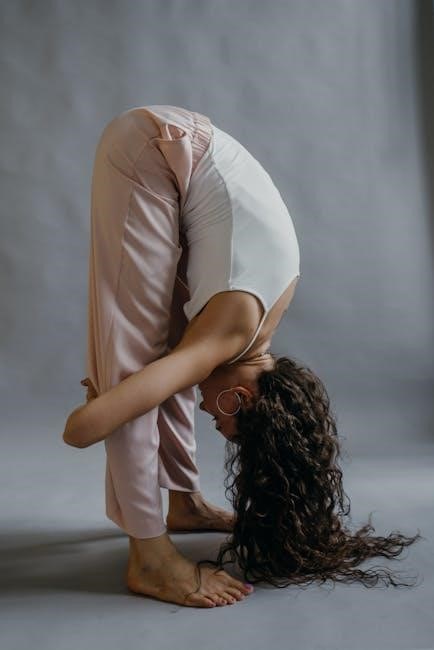
Benefits of Yoga Flow Sequences
Yoga flow sequences enhance physical and mental well-being by improving strength, flexibility, and balance. They reduce stress, boost focus, and promote mindfulness, fostering a deeper connection with the body.
2.1 Physical Benefits: Strength, Flexibility, and Balance
Engaging in yoga flow sequences offers numerous physical benefits, including enhanced strength, flexibility, and balance. By moving through a series of poses, practitioners build muscular endurance and improve joint mobility. Regular practice strengthens core muscles, essential for stability and posture. Flexibility is increased as each pose gently stretches the hamstrings, hips, and spine. Balance is refined through poses like Tree and Eagle, which challenge equilibrium and focus. Over time, these physical improvements contribute to better overall athleticism and reduce the risk of injury. The structured nature of yoga flow sequences ensures a comprehensive workout, addressing multiple aspects of physical fitness in each session.
2.2 Mental and Emotional Benefits: Stress Relief and Focus
Yoga flow sequences provide profound mental and emotional benefits, particularly in stress relief and improving focus. The continuous movement synchronized with breath helps calm the mind, reducing cortisol levels and promoting relaxation. Regular practice enhances concentration and mental clarity, as it requires attention to posture and breathing. The meditative aspects of yoga flow foster mindfulness, allowing practitioners to disconnect from daily stress and reconnect with their inner selves. Over time, this practice cultivates emotional resilience, helping individuals manage anxiety and maintain a balanced mental state. The structured yet flowing nature of these sequences also fosters a sense of accomplishment and self-awareness, further boosting mental well-being.
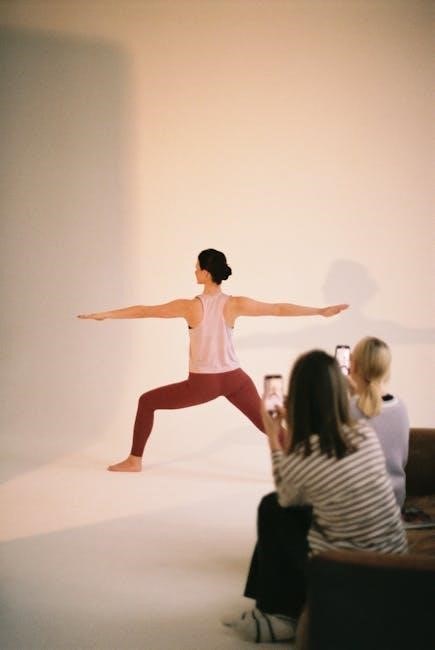
Understanding the Structure of a Yoga Flow Sequence
A yoga flow sequence typically follows a structured progression, starting with a warm-up, building to a peak pose, and ending with a cool-down to promote balance and relaxation.
3.1 Warm-Up and Preparation
The warm-up phase in a yoga flow sequence PDF is essential for preparing the body and mind. It typically begins with gentle movements like cat-cow stretches and sun salutations to increase blood flow and flexibility. Deep breathing exercises are often incorporated to center the breath and calm the nervous system. This phase also includes foundational postures that activate key muscle groups, ensuring a safe transition into more dynamic poses. Props such as blocks or straps may be recommended to support proper alignment and prevent injury. By gradually building heat and awareness, the warm-up sets the stage for a balanced and effective practice.
3.2 Peak Pose and Intensity
The peak pose section of a yoga flow sequence PDF is designed to challenge the body and mind, building strength, balance, and focus. This phase often includes dynamic postures such as Crow Pose, Warrior II, and balancing poses like Tree Pose, which test stability and concentration. Backbends and deep twists are common, aiming to open the chest and shoulders while enhancing flexibility. Breathing techniques are emphasized to maintain calm and control during intense stretches. Poses are typically held for 5-10 breaths to deepen the stretch and build endurance. Variations are provided to accommodate different levels, ensuring accessibility for both beginners and advanced practitioners. This section is where the sequence reaches its climax, pushing the body to its limits while fostering mental resilience.
3.3 Cool Down and Relaxation
The cool-down phase in a yoga flow sequence PDF is essential for transitioning from intense poses to relaxation. It typically includes gentle stretches, deep breathing exercises, and calming postures like Child’s Pose, Seated Forward Fold, or Legs-Up-The-Wall Pose. These poses help slow down the heart rate, release tension, and promote relaxation. Guided breathing techniques, such as alternate nostril breathing or belly breathing, are often incorporated to calm the nervous system. The final relaxation, or Savasana, is a key component, allowing the body to absorb the benefits of the practice while re-centering the mind. This phase ensures a smooth transition, leaving practitioners feeling refreshed and balanced.
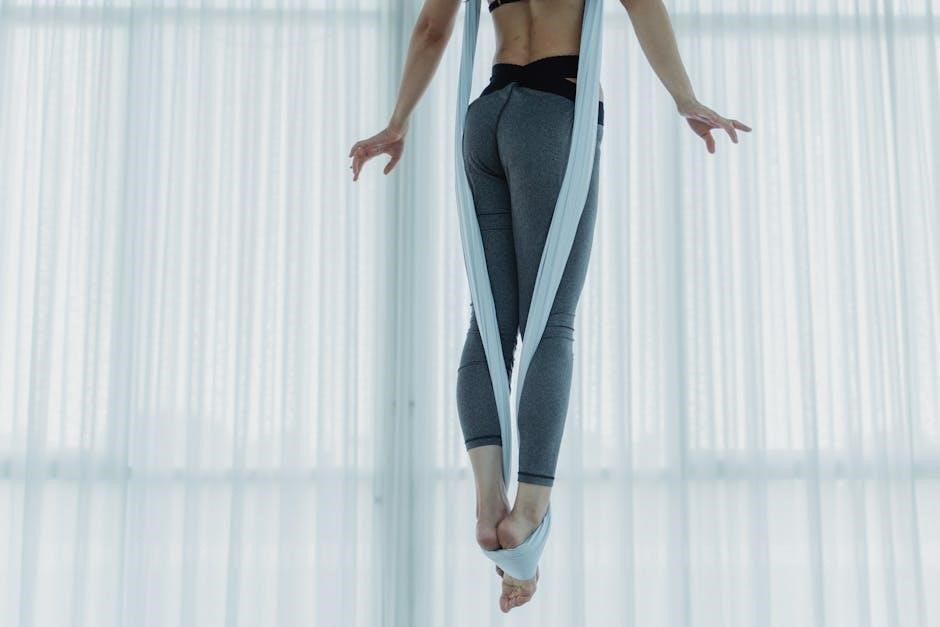
Popular Yoga Flow Sequences
Explore popular yoga flow sequences, including Full-Body Yoga Flow for overall wellness, Hip Opening Flow for flexibility, and Lower Back Pain Relief sequences. These PDF guides offer accessible, structured practices for all levels, from beginners to advanced yogis.
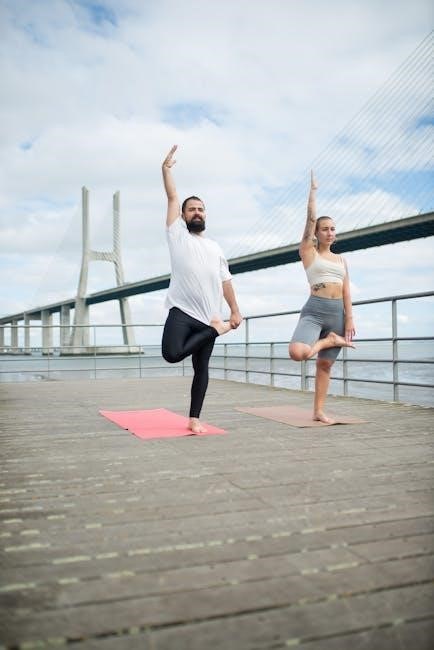
4.1 Full-Body Yoga Flow for Overall Wellness
A Full-Body Yoga Flow sequence is a comprehensive practice designed to engage and benefit every part of the body. This flow typically includes a variety of poses that strengthen, stretch, and balance the entire physique. From dynamic movements like sun salutations to grounding postures such as Warrior II and Triangle Pose, it promotes overall wellness by improving circulation, flexibility, and strength. The sequence often incorporates breath awareness, helping practitioners connect with their inner energy and maintain focus. Many yoga flow sequence PDFs offer detailed instructions and visuals for this flow, making it accessible for both beginners and advanced practitioners. The full-body approach ensures a holistic practice, addressing physical, mental, and emotional well-being.
4.2 Hip Opening Yoga Flow Sequence
The Hip Opening Yoga Flow sequence is specifically designed to release tension and improve flexibility in the hip area. This sequence often includes poses like Pigeon Pose, Seated Forward Fold, and Warrior II, which target the hip flexors, glutes, and lower back muscles. By gently stretching and opening these areas, the flow helps alleviate tightness and enhances mobility. Many yoga flow sequence PDFs provide detailed guidance, including modifications and breath techniques, to ensure a safe and effective practice. The sequence is particularly beneficial for individuals with sedentary lifestyles or those who engage in activities that tighten the hips. Regular practice can lead to better posture, reduced lower back pain, and increased overall comfort. This flow is ideal for anyone seeking to deepen their hip flexibility and improve their range of motion.
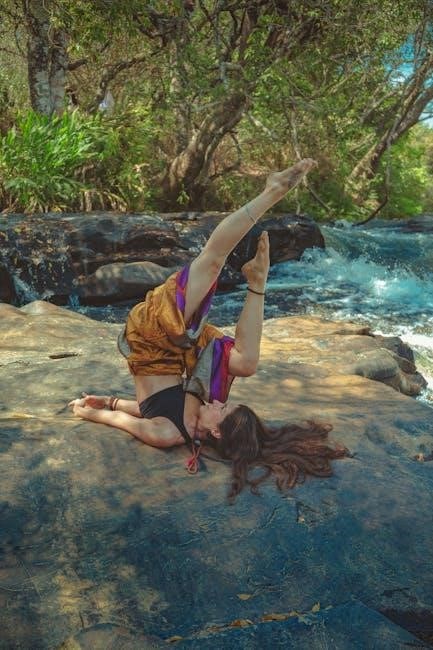
4.3 Yoga Flow for Lower Back Pain Relief
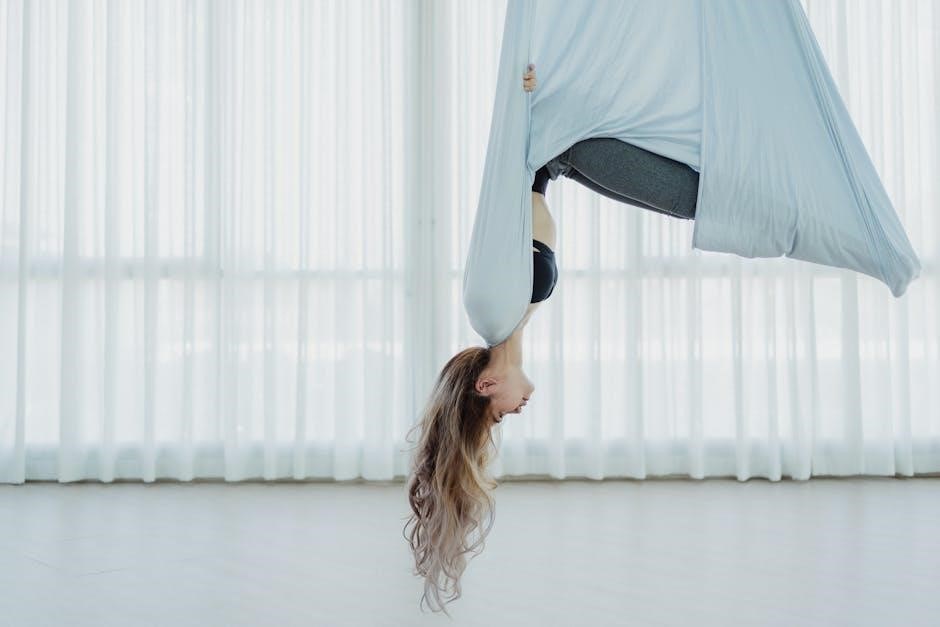
The Yoga Flow for Lower Back Pain Relief is a carefully crafted sequence designed to alleviate discomfort and strengthen the muscles supporting the spine. This flow typically includes gentle stretches like Cat-Cow, Child’s Pose, and Sphinx Pose, which promote flexibility and relaxation in the lower back region. Breathing techniques are emphasized to enhance the therapeutic benefits and reduce tension; Many downloadable PDF guides provide step-by-step instructions, modifications, and tips to adapt the sequence to individual needs. Regular practice can improve posture, reduce muscle stiffness, and enhance overall spinal health. This sequence is ideal for those seeking a gentle, restorative approach to managing lower back pain and improving mobility. It’s suitable for both beginners and experienced yogis, offering a nurturing path toward relief and wellness.
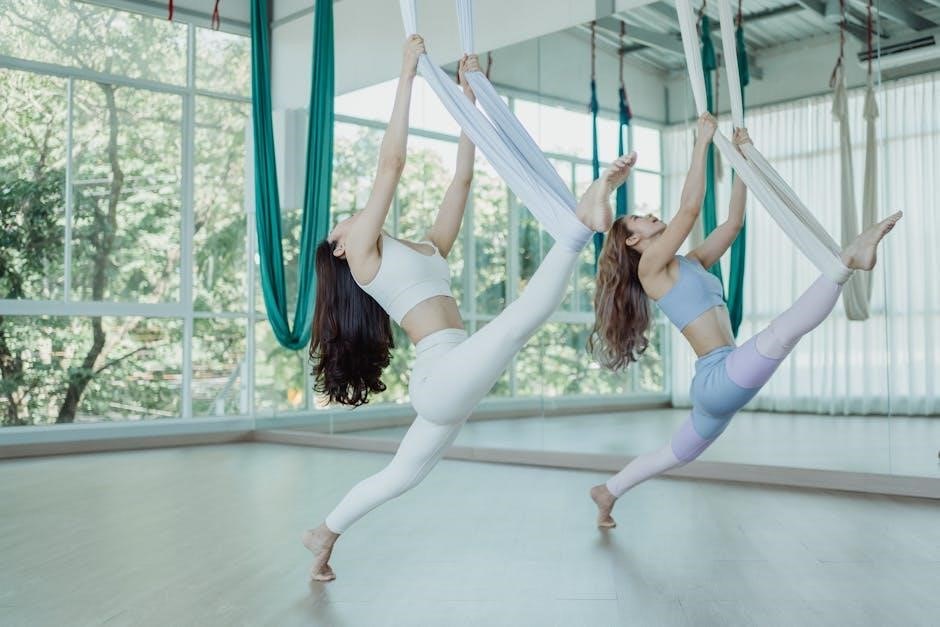
Modifying the Sequence for Different Levels
Yoga sequences can be adapted to suit all levels by using props, adjusting duration, and modifying poses. This ensures accessibility and effectiveness for every practitioner.
5.1 Using Props for Support
Props are essential for modifying yoga sequences, offering support and alignment guidance. Blocks, cushions, and straps help practitioners achieve poses comfortably. They enhance accessibility, making sequences suitable for all levels. By incorporating props, individuals can maintain proper form, reduce injury risk, and deepen stretches. This allows for a more inclusive practice.
5.2 Adjusting Duration and Intensity
Yoga sequences can be tailored to suit individual needs by adjusting duration and intensity. Shorter practices focus on key poses, while longer sessions allow for deeper exploration. Intensity can be modified by holding poses longer or incorporating more dynamic flows. Beginners may opt for slower-paced sequences, while advanced practitioners can add challenging variations. Listening to your body ensures a safe and effective practice. Adjusting duration and intensity helps maintain balance, preventing overexertion and fostering sustainable progress. This flexibility makes yoga accessible to everyone, regardless of fitness level or goals.
Creating Your Own Yoga Flow Sequence
Start by listening to your body and identifying your goals. Tailor the sequence to suit your energy levels and intentions, incorporating poses that promote strength, flexibility, and relaxation.
6.1 Listening to Your Body and Needs
Listening to your body is crucial when creating a yoga flow sequence. Honor your physical and mental state to ensure a safe and beneficial practice. Assess your energy levels, any areas of tension, and set clear intentions for your session. If you’re feeling fatigued, opt for restorative or gentle flows. For increased vitality, incorporate dynamic poses. Modify sequences to accommodate injuries or limitations, using props for support when needed. Pay attention to breath and sensations, allowing them to guide your movement. This mindful approach fosters a deeper connection with your body, enhancing the overall experience and ensuring a practice that nourishes both body and soul.
Resources for Downloadable Yoga Flow PDFs
Discover free and premium yoga flow sequence PDFs online, offering structured practices for various goals. Download guides like Sun Flow, Power Yoga, and Restorative sequences for convenience and inspiration.
7.1 Free Printable Yoga Flow Sequences
Access a variety of free printable yoga flow sequences designed for different goals and levels. These PDFs offer detailed instructions, pose illustrations, and timing guidance for practices like Full-Body Flow, Hip Opening, and Lower Back Relief. Perfect for home practice, they are easily downloadable and adaptable to individual needs. Many sequences include modifications and prop suggestions, ensuring accessibility for all practitioners. Print them out to follow along effortlessly, enhancing your yoga journey with structured and intentional flows that promote strength, flexibility, and relaxation. These resources are ideal for both beginners and experienced yogis seeking new inspiration or a refreshing routine.
7.2 Benefits of Using a PDF Guide
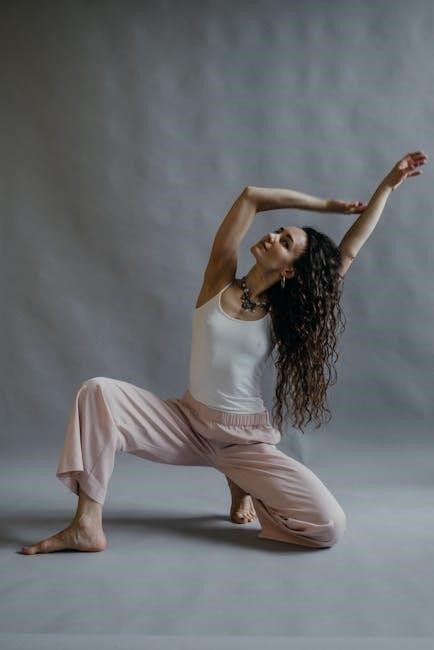
Using a yoga flow sequence PDF guide offers numerous benefits for practitioners. It provides a clear, structured plan that can be followed at home or in a studio, ensuring consistency and progression. The visual layout and detailed instructions make it easy to understand and master each pose. PDF guides are portable and accessible, allowing you to practice anywhere without relying on internet connectivity. Many include timing cues, modifications, and breathwork tips, catering to different levels and goals. They also serve as a valuable tool for tracking progress and staying motivated. Whether you’re aiming to improve flexibility, build strength, or reduce stress, a PDF guide offers a convenient and comprehensive way to enhance your yoga journey.
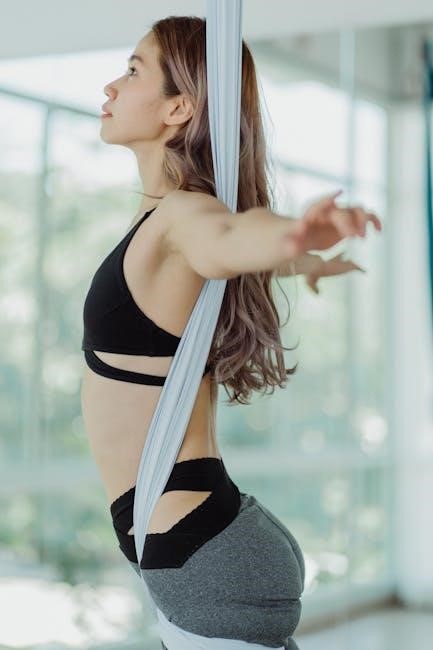
Yoga flow sequence PDFs are comprehensive guides that enhance practice, offering portability, structure, and convenience; They cater to all levels, ensuring accessible and effective yoga experiences for wellness.
8.1 Final Thoughts on Yoga Flow Sequences
Yoga flow sequences are transformative tools for enhancing physical, mental, and emotional well-being. They offer structured practices that cater to all levels, from beginners to advanced practitioners. By following a downloadable PDF, you can easily incorporate these sequences into your daily routine, ensuring consistency and progress. Remember, yoga is a personal journey, and modifying poses to suit your needs is key to a safe and fulfilling practice. Whether you’re seeking stress relief, strength, or flexibility, yoga flow sequences provide a holistic approach to wellness. Embrace the flow, listen to your body, and enjoy the profound benefits that yoga has to offer.
- Downloadable PDFs make practice accessible and convenient.
- Modify poses to honor your body and abilities.
- Consistency is key to experiencing lasting benefits.